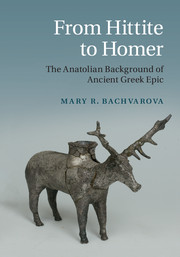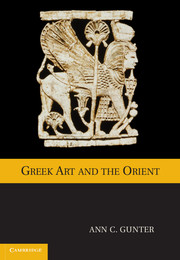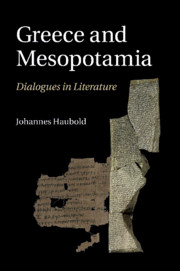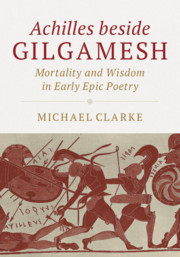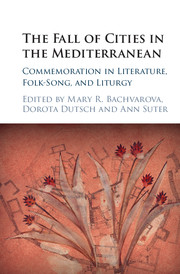From Hittite to Homer
This book provides a groundbreaking reassessment of the prehistory of Homeric epic. It argues that in the Early Iron Age bilingual poets transmitted to the Greeks a set of narrative traditions closely related to the one found at Bronze-Age Hattusa, the Hittite capital. Key drivers for Near Eastern influence on the developing Homeric tradition were the shared practices of supralocal festivals and venerating divinized ancestors, and a shared interest in creating narratives about a legendary past using a few specific storylines: theogonies, genealogies connecting local polities, long-distance travel, destruction of a famous city because it refuses to release captives, and trying to overcome death when confronted with the loss of a dear companion. Professor Bachvarova concludes by providing a fresh explanation of the origins and significance of the Greco-Anatolian legend of Troy, thereby offering a new solution to the long-debated question of the historicity of the Trojan War.
- Links together in a new way the four sets of data used to discuss the prehistory of Homeric epic: Akkadian epic, Hittite texts, Mycenaean material culture, and early Iron Age material culture
- Focuses not only on parallels between texts, but also on how these parallels came about: mechanisms of contact, motivations for borrowing
- Combines historical and literary approaches to the question of the origin of the Iliad, providing a new solution to the long-debated question of the historicity of the Trojan War
Reviews & endorsements
'… very user-friendly. … this work is highly recommended.' Journal for the Study of the Old Testament
'… this volume fills a perceived gap, is appropriate for a wide scholarly audience, and will ideally stimulate deeper conversation within scholarship concerning the pre-classical traditions of Greek literature.' Scripta Classica Israelica
Product details
April 2016Hardback
9780521509794
690 pages
253 × 182 × 35 mm
1.49kg
27 b/w illus. 5 maps 4 tables
Available
Table of Contents
- 1. Introduction
- 2. Hurro-Hittite song at Hattusa
- 3. Gilgamesh at Hattusa: written texts and oral traditions
- 4. The Hurro-Hittite ritual context of Gilgamesh at Hattusa
- 5. The plot of the Song of Release
- 6. The place of the Song of Release in its Eastern Mediterranean context
- 7. The function and prehistory of the Song of Release
- 8. Sargon the Great: from history to myth
- 9. Long-distance interactions: theory, practice, and myth
- 10. Festivals: a milieu for cultural contact
- 11. The context of epic in Late Bronze and Early Iron Age Greece
- 12. Cyprus as a source of Syro-Anatolian epic in the Early Iron Age
- 13. Cultural contact in Late Bronze Age Western Anatolia
- 14. Continuity of memory at Troy and in Anatolia
- 15. The history of the Homeric tradition
- 16. The layers of Anatolian influence in the Iliad
- Appendix. Contraction and the dactylic hexameter.

